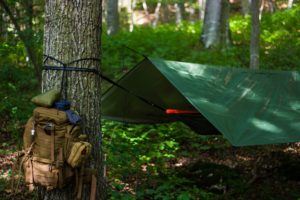Paddleboarding in the ocean isn’t only a great form of exercise, but you can’t beat the views of the ocean’s horizon while paddling across the water. From fishing to yoga, stand-up paddleboards have a variety of uses in the water. But have you ever thought about surfing on a paddleboard?
Can you surf on a paddleboard? Yes, you can. Paddleboards provide balance and stability while surfing, providing a unique surf experience. They are a great tool for beginner surfers.
If you own one or want something with multiple uses, paddleboards are great for a variety of water sports. Whether you’re a beginner surfer or an advanced wave rider looking for a new experience, paddleboards offer a great way to practice surfing and catching waves.
How to Surf on a Paddleboard

Surfing on a paddleboard can be easy and fun, as long as you practice the right habits. There are three major points when surfing on a paddleboard: safety, practice, and positioning. Each point ensures you’ll have the best experience while surfing.
Safety While Surfing: Turning a Paddleboard into a Surf Board
In any water activity, especially surfing, it’s important to practice safety. Many things can go wrong if you don’t. If you’re a surfer or interested in beginning surfing, you should be able to swim comfortably, know how to find the right surf conditions, and always bring a buddy with you.
Your paddleboard should have a leash attached to it. If it doesn’t, buy one before heading out on the water. A board leash should at least be as long as your board. If your board is heavy or the waves are rough, purchase a thicker leash.
Some paddleboards come with a coil leash, but these retractable leashes could be dangerous when you fall while surfing. The board can recoil back to you and potentially cause injury.
This video gives you a detailed explanation of how to pick a leash and take care of it.
Can You Paddleboard in the Ocean?
To paddleboard in the ocean, you need to understand the surf conditions and what you are capable of with your paddleboard. Every surfer knows how to read a surf forecast and find the right wave with ease. Most beaches have online surf reports that you can find with a simple Internet search, and Surfline provides a list of surf forecasts for locations worldwide.
A surf report or forecast includes the following information:
- Wave height
- Swell height, period, and direction
- Wind strength and direction
- Tide
The surf height is a good place to start. Paddleboard surfers should look for two- to three-foot waves; these are the most ideal for learning. The swell height is a more accurate reading: the larger the swell height, the bigger the waves.
For example, a swell report that says “4 feet at 10 seconds” is a small wave that would work for beginners, and one that says “5 feet at 16 seconds” is good for skilled surfers (Source: US West Surf Kayak).
Check the wind direction before heading to the beach as well. Wind reports are either onshore, where the wind blows toward the beach, and offshore, where the wind blows toward the water. Look for light offshore winds – they help create slow waves and smooth water. Onshore winds tend to create choppy water that’s hard to surf.
The last item to look at is the tide. Aim to surf during mid-tide. Low tides are hard to surf with shallow waters, and high tide can flatten out the surf (Source: US West Surf Kayak).
For a more detailed explanation of surf forecasts, read this post from US West Surf Kayak.
When you get to the beach, make sure the waves are small and there’s very little chop on the water. Find a spot where there’s only a slight offshore wind.
Practice Makes Perfect When Surfing

If you’re new to surfing, sign up for lessons before trying to catch waves by yourself. Experienced instructors will show the right stance, paddling tips, and even how to fall into the water when you lose balance.
Until you’ve gotten good control of your paddleboard and skills, practice away from other surfers and swimmers. Look for an open beach with small waves (one or two feet high) that break away from the shore.
Paddleboarding Vs. Surfing: Body and Board Positioning
The last key to a successful surfing adventure aboard a paddleboard is the body and board positioning. To catch a wave, you need to be in the right position and location to the wave you want to ride.
Before you get out into the waves, you need to first kneel down or sit on the paddle board. Learn more about how to do that here.
Paddleboards are significantly heavier and bulkier than a standard surfboard, and if you’re using a paddle, that’s another item to consider. Get into the water and past the breaking waves before you stand up on your board.
To keep your board from slipping out of your hands and floating back to shore, keep it perpendicular to the coming waves. Once you’re up and standing, lay on the board on your stomach. If you have a paddle, keep it tucked under you with the handle side sticking out in front.
From there, paddle as if you’re on a regular surfboard, and stand up when you’re ready. Before you know it, you’ll be up in a surfer’s stance taking on the waves, using your paddle to guide your direction! Remember: beginners should always take lessons with professionals before heading out on their own.
What Type of Paddleboard Should You Use to Surf?

Paddleboards a great tool for beginner surfers because they’re large and long – the perfect board to start on. Boards aren’t cheap, so it’s an investment that takes some research. Not all paddleboards are suitable for surfing, so it’s important to find one that works for you and the waves.
Look for a board that has versatile uses and is easy to carry. Large boards can be heavy, so find a lightweight one if you can. A board with a lower volume and less thickness will help you catch the best waves.
You want to find a board whose shape will work for surfing. If you already own a board, something with an all-around shape will work. A 10-foot board is long for surfing, but it’s acceptable if you’re just starting your surf journey. There are surfing-specific boards that are around nine feet long that have narrower tails to help with maneuvering.
A board with just one fin or one with the ability to add side fins is best for surfing. This will help increase speed and ability to turn the board as you ride a wave. Boards with traction on the deck pad are better for surfing so that your feet don’t slip as you stand and maneuver waves.
There are inflatable paddleboards, but hardboards are preferred for surfing. They will feel like a real surfboard and are easier for surfing. However, an inflatable board may be more comfortable for beginners as they fall – and get back up.
This is a comparison of some of the best paddleboards most suitable for surfing (especially for beginners):
| Board | Length/Weight | Description |
| Red Paddle Co 2019 Ride MSL ($1,099) | 10’6’’/35 pounds | Inflatable (good for beginners), stable base for easy maneuvering, MSL coating ensures quality |
| BIC Sport ACE-TEC Cross Sup Stand Up Paddleboard ($1,099.95) | 10’6’’/28 pounds | Versatile, ideal for all skill levels, watertight foam core, easy to maneuver |
| SereneLife Premium Inflatable Stand Up Paddleboard ($383.91) | 10’5’’/20 pounds | Cheap, inflatable (good for beginners), anti-slip top deck, includes air pump and travel bag |
| Goplus Inflatable Stand up Paddleboard ($319.99) | 10’/18 pounds | Versatile, inflatable (good for beginners), cheap, adjustable paddle, includes removable fin, hand pump, and repair kit |
| Sportstuff Adventure Stand Up Paddleboard ($474.78) | 10’4’’/20 pounds | Inflatable (good for beginners), anti-skid pads, rubber grips, different sizes available, includes hand pump |
As you take your paddleboard out for a day catching waves, you’ll learn more and more about how it acts just a bit different than a surfboard. But, for beginners, paddleboards are a great place to start getting comfortable surfing and paddling in the ocean.






